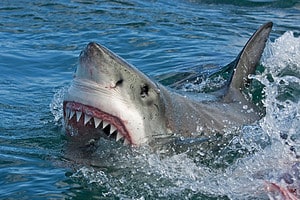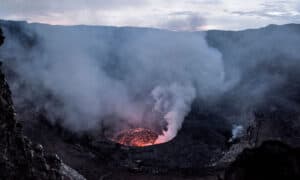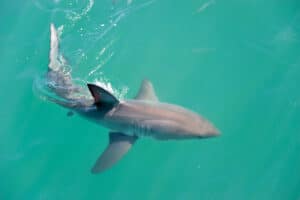North Carolina‘s Outer Banks are currently filled with college students on spring break. Those spring breakers are not the only ones enjoying the coastal Carolina waters, though. On March 25, a massive great white shark showed up very close to Hatteras Island. Tracking data suggests the shark is heading north along the coast of the Outer Banks.
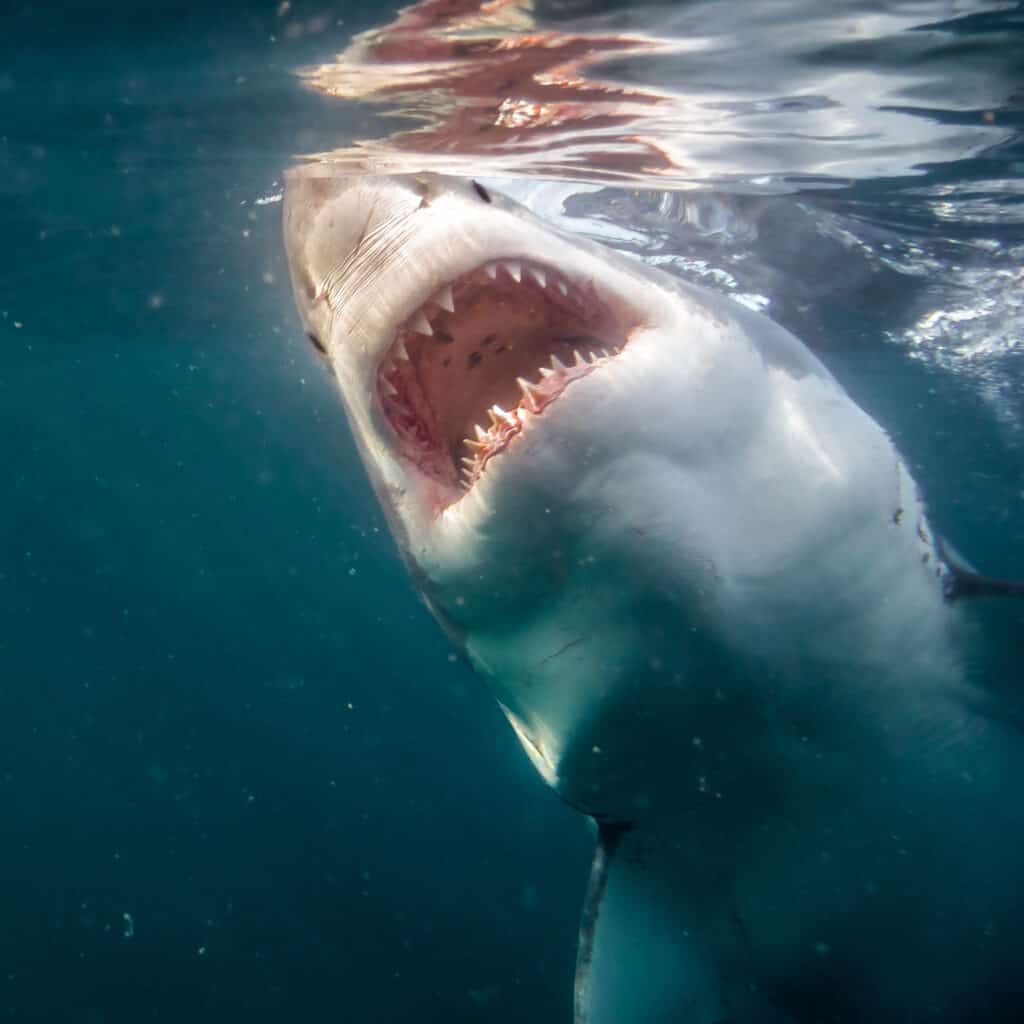
A massive great white shark was just tracked right off the coast of North Carolina’s Outer Banks.
©Vincent Legrand/Shutterstock.com
Tracking Sharks
This shark is one of many great whites tracked by OCEARCH, a global nonprofit organization dedicated to preserving the ocean’s apex predators. In order to learn more about them, OCEARCH tags great white sharks off the Atlantic coast of the United States and Canada. Each tag contains a sophisticated transmitter. Once affixed to the shark’s dorsal fin, the transmitter sends a ping to OCEARCH researchers whenever the shark’s fin breaks the water’s surface. This is how we know a giant great white is patrolling the waters directly off North Carolina’s Outer Banks.
Breton
OCEARCH names each of the sharks that are tracked in its system. For example, the shark that just showed up in North Carolina waters is named Breton. The male great white shark was named in honor of the people of Cape Breton in Nova Scotia, where it was tagged. Breton is over 13 feet long and weighs nearly 1,500 pounds, making him one of the largest sharks currently tracked by OCEARCH.
Breton has been tracked since his tagging on September 12, 2020. The data shows this particular shark has ventured further into the waters of the open Atlantic than most other sharks, followed by OCEARCH. Breton has also been tracked in coastal waters from Newfoundland to Florida. But his tracking data over the last 2.5 years have revealed a pattern. Breton always seems to end up back in North Carolina waters in February and March. He showed up in these waters again today, right on schedule.
A Possible Shark Nursery
Breton is not the only large great white that consistently returns to the waters of North and South Carolina. OCEARCH tracking data reveals great whites show up in these waters in large numbers, especially in the spring.
While it has not yet been confirmed, researchers suspect the waters off the Carolina coast may contain a great white shark nursery. This would explain why so many juveniles are in the area. It also would reveal why large adult great whites, such as Breton, keep coming back to the same water year after year. This seems to be where they mate.
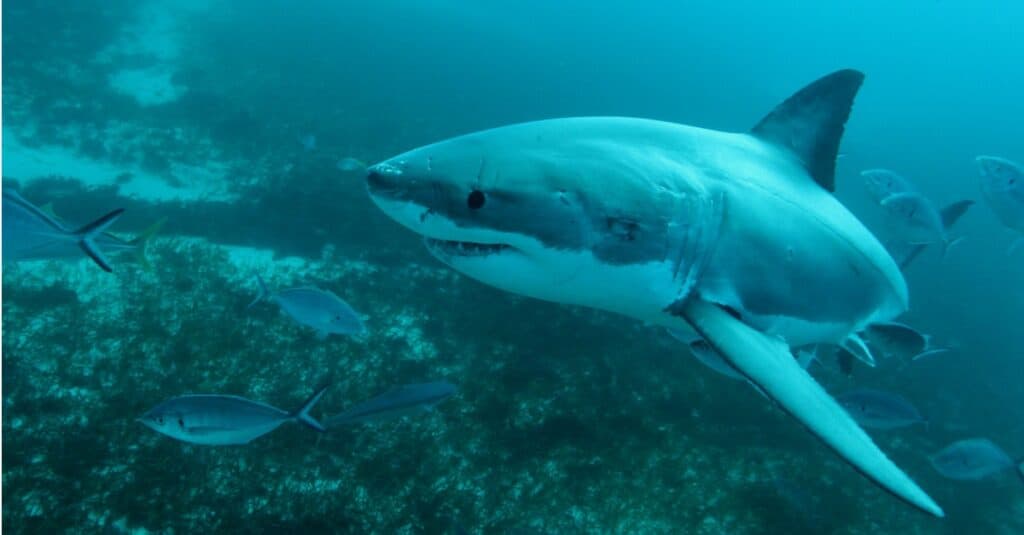
The number of juvenile great white sharks in coastal Carolina waters suggests the presence of a shark nursery.
©iStock.com/Alessandro De Maddalena
Cause for Alarm?
When a great white shark of such mammoth proportions is swimming so close to shore, beachgoers should indeed be aware and exercise caution. However, there have been no shark attacks in North or South Carolina so far in 2023.
Florida has seen multiple shark bites already this year. That state is the shark bite capital of the world, and early indications this year suggest it will hold onto that title.
Attacks in Carolina waters happen far less frequently than in Florida. That, however, does not mean the risk is zero. How do you keep yourself safe while spending the day at the beach?
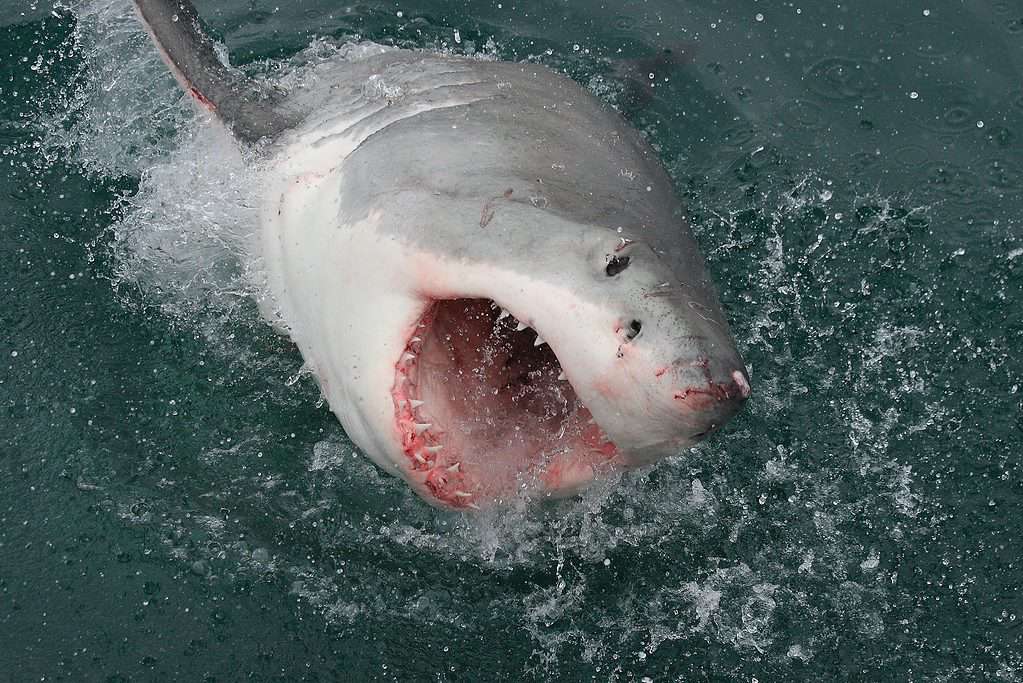
Sharks are coming to North Carolina waters in greater numbers. As a result, beachgoers must be aware and cautious.
©Alessandro De Maddalena/Shutterstock.com
Staying Safe at the Beach
First of all, always swim in a group. A group is far less likely to pique a shark’s interest than a lone swimmer.
Stay in the shallows. The further you venture from shore, the higher the likelihood you will encounter a shark.
Do not wear jewelry while in the water. When sunlight reflects off of shiny jewelry, sharks can mistake that flash for fish scales. It is important to remember that sharks have relatively poor eyesight. When a shark bites a human, it is almost always because the shark mistook the human for a prey animal.
Sharks are most active during the evening and overnight hours. Stay out of the water during these times.
Avoid water used by commercial and recreational anglers. Their bait may attract sharks to the areas.
Pay attention to local reports. Shark activity is closely monitored, and notifications will be reported through local news outlets.
And this last one should go without saying, but it happens every year: never, ever harass a shark! Unprovoked shark attacks are tragic, but provoked attacks are usually the result of stupid and completely preventable human decisions.
It bears repeating that the odds of a shark encounter in North Carolina waters are low, but encounters do happen. When a 1,500-pound great white shark is known to be swimming so close to shore, extra caution is absolutely necessary.

Swimming in groups dramatically lowers the risk of a shark encounter.
©iStock.com/molchanovdmitry
Where Is North Carolina Beach Located on a Map?
North Carolina is a state in the Southern United States. The state is the 28th largest and 9th-most populous of the United States. It is bordered by Virginia to the north, the Atlantic Ocean to the east, Georgia and South Carolina to the south, and Tennessee to the west.
Here is North Carolina Beach on a map:
The photo featured at the top of this post is © iStock.com/DigtialStorm
Thank you for reading! Have some feedback for us? Contact the AZ Animals editorial team.



